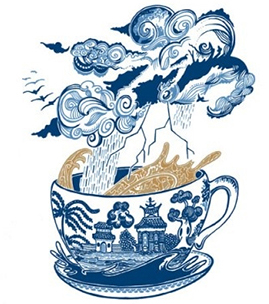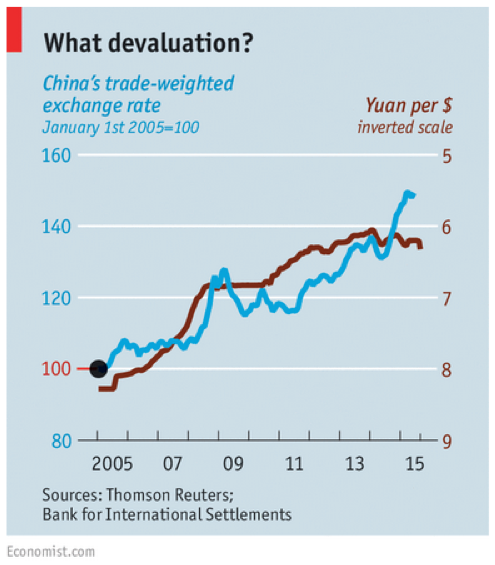Disclaimer
Information provided on this website is general in nature and does not constitute financial advice. Every effort has been made to ensure that the information provided is accurate. Individuals must not rely on this information to make a financial or investment decision. Before making any decision, we recommend you consult a financial adviser to take into account your particular investment objectives, financial situation and individual needs.
Is it just Yuan big storm in a teacup?
Earlier this month, without notice or explanation, the People’s Bank of China (PBOC) lowered the yuan’s ‘daily fix’[1] by 1.9% against the U.S. dollar, the largest devaluation in 20 years. Investors responded by hitting the panic button.
Investor’s feared that it signalled a sharper than expected slowdown in the world’s biggest economy. Apple shares dropped 5%, the Australian dollar nose dived and oil dipped to a six-year low. Financial analysts were blind sighted, was the PBOC’s intention to weaken the yuan or to strengthen it?
Given all the headlines about devaluation, weakening would seem the obvious answer. In fact, the opposite may be true: it first tried to stand aside, giving the market more say in the yuan’s value, and then backtracked, intervening to stem the ensuing decline. The about-face reveals much about both the oddities of China’s economy and the difficulty of reforming it.
This raises the question of what the PBOC is hoping to achieve.
Some argue this is the start of a “currency war” or a concerted policy to boost China’s weakened exports sector (The depreciation, after all, came just a couple of days after a surprisingly big drop in exports). However, the scale of the yuan’s weakening contradicts such a motive (see chart). The initial 2% devaluation only undid the previous ten days’ worth of appreciation in trade-weighted terms. The yuan still remains more than 10% stronger against the currencies of China’s trading partners than it was a year ago.
A week later and the general consensus is that China’s actions are motivated as much by politics as economics. The government resisted devaluing the Yuan during the Asian Financial Crisis in 1998, in large due to their desire to be seen as Asia’s regional leader. Similar motives are at play today.
The government is pushing for the Yuan’s entrance into the basket of currencies which provide the value for the IMF’s Special Drawing Rights (SDR) – effectively its reserve assets. Acceptance would establish the Yuan as an internationally recognised reserve currency. To be included, however the Yuan must meet two criterions: It must be a major exporter (it’s exports averaged 11% of the global total, no one disputes this criterion) and it must also be recognised as “freely usable”. The move towards a more market orientated means for determining the currency’s exchange rate is a clear step in this direction, and a signal of intent in the direction of the IMF, which has welcomed the move.
Bringing the yuan into the SDR would give the PBOC a victory and strengthen its position in domestic debates, by showing that opening up the economy brings rewards. At a time when there are doubts about China’s commitment to reform, following its heavy-handed stock market intervention, that would be all the more valuable.
[1] China sets a midpoint for the value of the yuan against the U.S. dollar. In daily trading, the yuan is allowed to move 2% above or below that midpoint. This is called the daily fixing.


